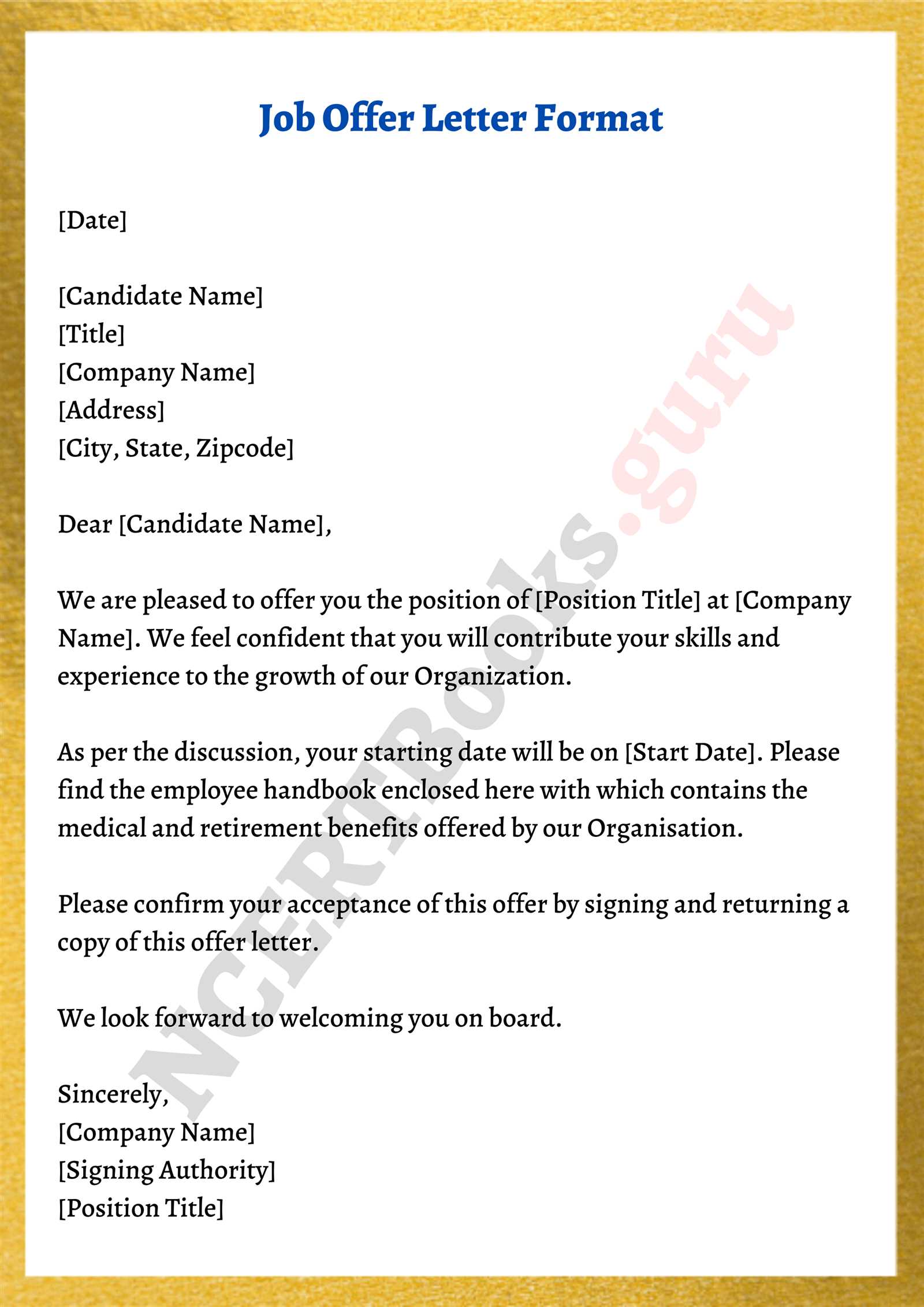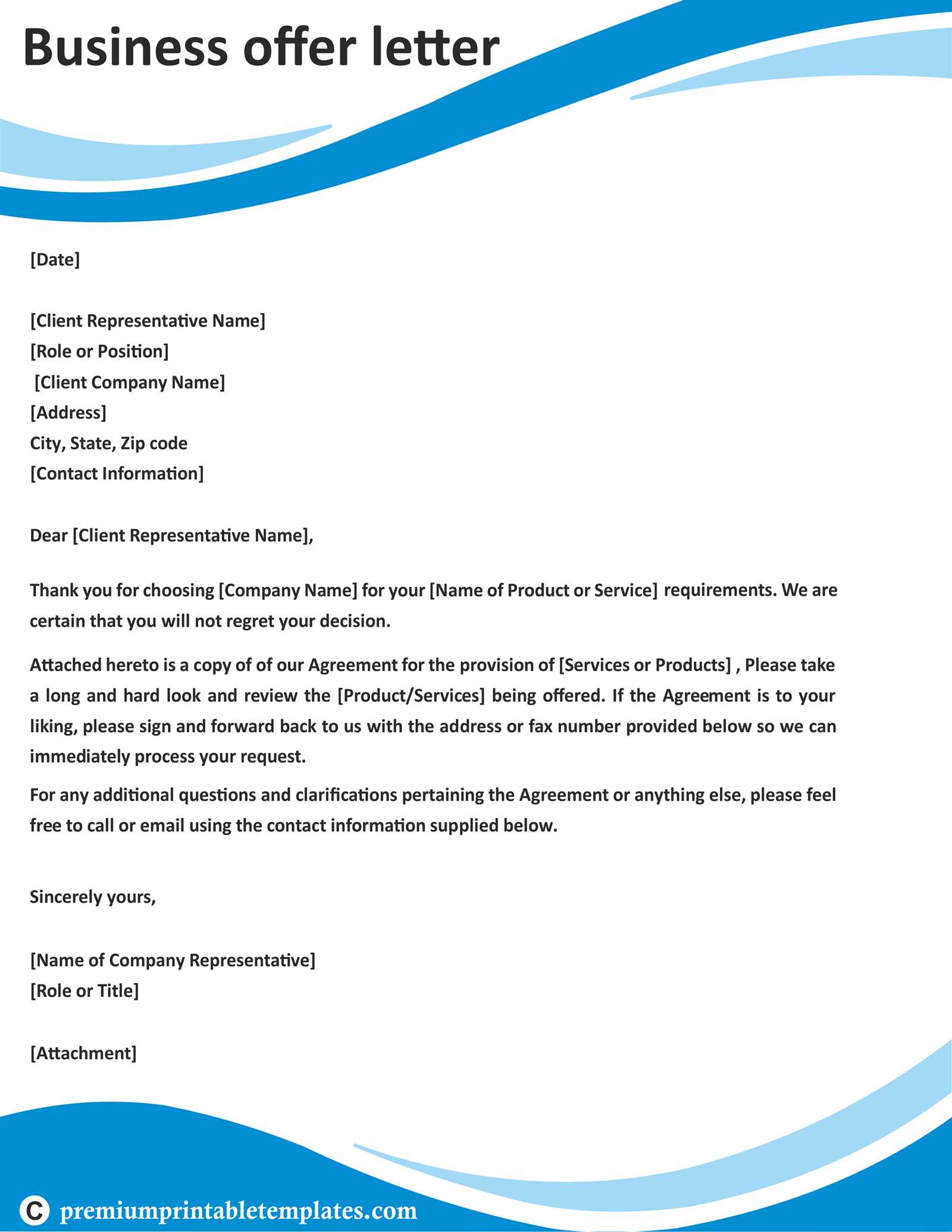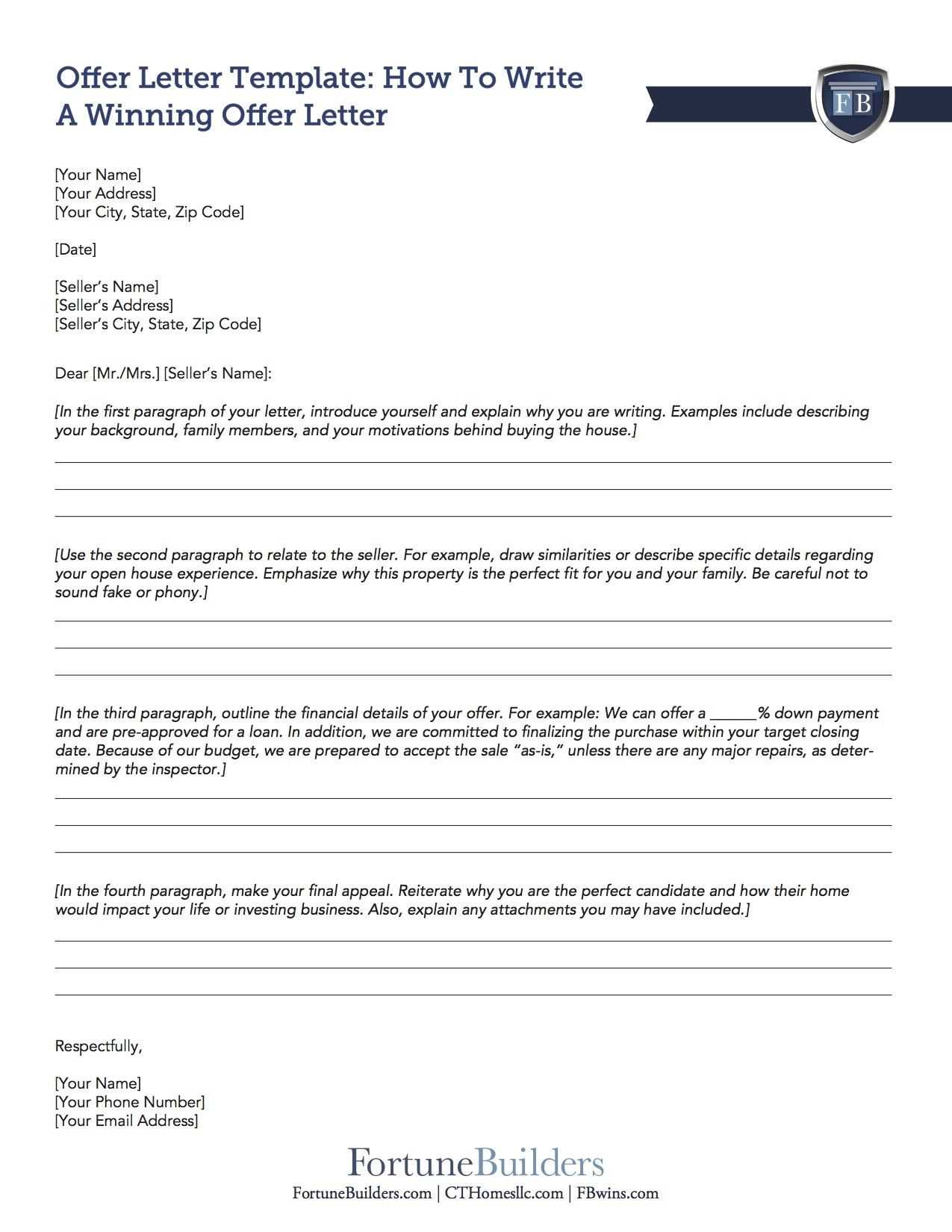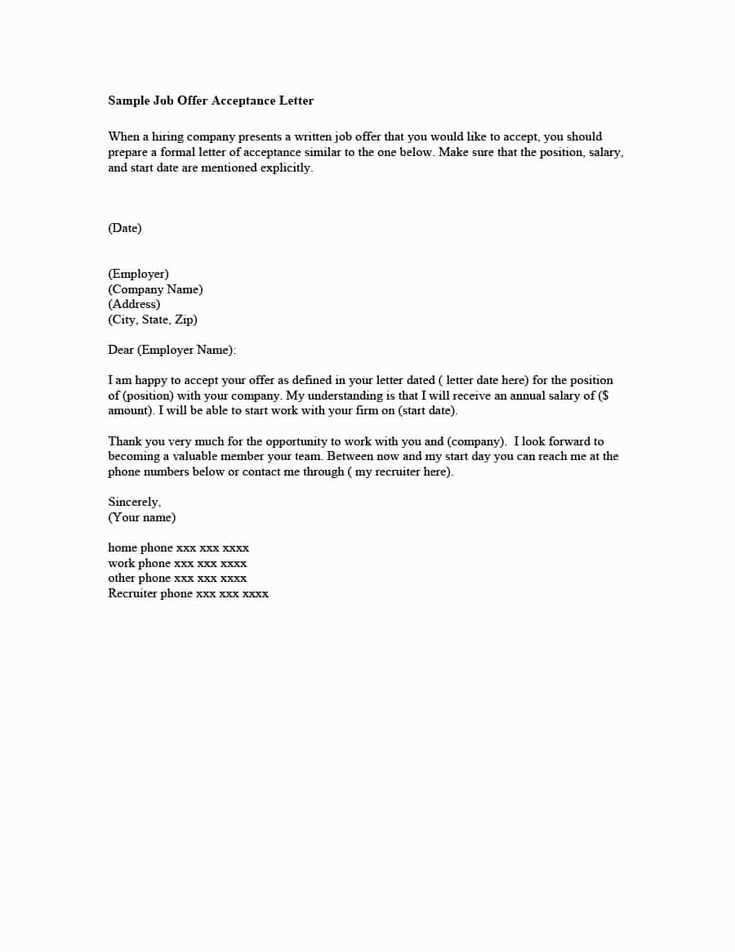New hire offer letter template

When crafting a new hire offer letter, clarity and precision are key. Start with a personalized greeting that sets the tone for a positive relationship. Address the candidate by name and briefly mention the role they will be taking on within the company.
Next, outline the key details of the offer, including the job title, salary, and employment type (e.g., full-time or part-time). Clearly state the start date and any expectations regarding the first day on the job. Providing this information upfront helps set the stage for a smooth transition into the role.
In the following section, highlight any benefits, such as health insurance, paid time off, or retirement plans, that the company offers. Be specific about any eligibility requirements or waiting periods for benefits, so the candidate understands the full scope of what is being offered.
Close the letter by inviting the candidate to ask questions and encouraging them to confirm their acceptance. Specify the deadline by which they should respond to the offer. Ending with a warm and welcoming note can help solidify the positive impression you’ve made during the hiring process.
New Hire Offer Letter Template
Use a clear, concise structure for your offer letter to ensure it covers all the key points. Here’s a simple template you can follow:
- Subject Line: Offer of Employment
- Opening Statement: Begin by congratulating the candidate and expressing your enthusiasm about their potential contribution to the team.
- Job Title: Clearly specify the role they are being offered. Include the department and location of the position.
- Salary and Compensation: Outline the base salary, any bonus structure, or additional benefits (e.g., health insurance, retirement plans).
- Start Date: Mention the proposed start date, along with any pre-employment paperwork or procedures to complete.
- Terms and Conditions: Include specifics about the job (full-time or part-time, probation period, working hours, etc.)
- Contingencies: List any conditions such as background checks, drug tests, or references needed before the job offer is finalized.
- Closing Paragraph: Reaffirm your excitement about their future at the company and invite them to contact you for any questions or clarifications.
- Signature: Include space for both the employer’s and the candidate’s signatures to confirm acceptance.
Be sure to adjust the tone and details based on your company’s culture and the level of the position.
Key Elements of an Offer Letter

Make the offer clear and precise. Include the job title, start date, and detailed compensation package. Specify the salary, bonuses, benefits, and any equity or stock options. Be clear about whether the position is full-time, part-time, or temporary.
Compensation and Benefits
Outline the salary, payment frequency, and benefits such as health insurance, retirement plans, paid time off, and any bonuses. Clarify whether the position offers flexible work hours, remote options, or other perks like professional development allowances.
Job Expectations and Terms
List key responsibilities, expectations, and the reporting structure. Mention any probationary periods, non-compete clauses, or confidentiality agreements. Clearly state the work schedule, location, and any travel requirements.
Crafting Clear Compensation and Benefits Details
Be specific about salary, bonuses, and other compensation components. Clearly state the base salary, frequency of payments (e.g., weekly, bi-weekly), and any performance-based bonuses or commission structures. Make sure to outline when these payments will be made, including any potential increases tied to performance reviews or promotions.
Salary Breakdown

Provide a detailed breakdown of the compensation package. Include any additional forms of pay such as sign-on bonuses, overtime rates, or equity options. Offering transparency on how salary adjustments will occur is crucial to avoid misunderstandings later.
| Compensation Type | Amount | Payment Frequency |
|---|---|---|
| Base Salary | $50,000 per year | Annually |
| Sign-On Bonus | $5,000 | One-time payment |
| Commission | Up to 10% of sales | Quarterly |
Benefits Overview

Clearly list all benefits the new hire will receive, including health insurance, retirement plans, paid time off (PTO), and any other perks. Make sure to include eligibility requirements and timelines for when these benefits will be available. Provide enough information for the employee to understand the total value of their benefits package.
| Benefit | Details |
|---|---|
| Health Insurance | Full coverage for employee and dependents after 30 days of employment |
| 401(k) Retirement Plan | Company matches up to 5% of salary after 6 months |
| Paid Time Off | 15 days per year, accrued monthly |
| Professional Development | Annual stipend of $1,000 for courses or certifications |
Provide clarity on the value of these benefits so the employee can appreciate the full compensation package.
Defining the Start Date and Reporting Structure
Clearly outline the start date in the offer letter. Specify the exact day the employee is expected to begin work, taking into account any pre-employment requirements such as background checks or document submissions. This provides clarity and ensures both parties are on the same page regarding the commencement of employment.
Setting Clear Expectations
Define the reporting structure explicitly. Specify who the new hire will report to and if there are any other team members they will collaborate with. Include details about the chain of command to prevent any confusion early on. If applicable, mention team meetings or regular check-ins with the manager or department heads to facilitate smooth integration.
Flexibility and Confirmation
If flexibility is needed regarding the start date, clearly state this in the offer letter. Provide a mechanism for the candidate to discuss and confirm if they need adjustments. This will help set expectations while also accommodating any unforeseen circumstances the new hire might face before their first day.
Outlining Probation Period and Performance Reviews
Clearly define the length of the probation period, specifying the exact duration, such as three or six months, and communicate this to the new hire in the offer letter. Indicate that their performance will be reviewed at regular intervals during this time, providing clarity on what to expect.
Set expectations for performance reviews. Outline how often these reviews will take place, whether monthly or quarterly, and who will conduct them. Be specific about the criteria used to evaluate progress, including job performance, attendance, and goal achievement.
Ensure the new hire understands that feedback will be constructive and focused on areas for improvement. Let them know that if expectations are not met during the probation period, there may be consequences, such as extending the probation or ending the employment relationship. Transparency during this phase will build trust and prevent confusion.
Incorporate a clear process for both positive and negative performance reviews. Explain that the employee will receive actionable feedback, and outline how follow-up discussions will be conducted to track progress and provide guidance on improvement.
Legal Considerations in the Offer Letter
Clearly outline job responsibilities and compensation to avoid confusion or misunderstandings. Include details about salary, bonuses, benefits, and working hours. Make sure the employment terms comply with local labor laws regarding minimum wage, overtime, and working conditions.
Specify the probationary period, if applicable, to protect both parties during the initial phase of employment. Indicate any non-compete or confidentiality clauses that apply to the position, ensuring they are reasonable and enforceable according to jurisdictional laws.
Address the conditions for terminating the employment relationship, including notice periods and severance terms. Ensure the offer letter reflects mutual expectations about resignation, termination, and the process for resolving disputes.
Verify that the offer includes compliance with anti-discrimination laws, ensuring that no language in the letter inadvertently violates equal opportunity policies. This helps prevent any legal challenges related to unfair hiring practices.
Creating a Positive Tone and Welcoming Language
Use clear, friendly, and enthusiastic language to make the new hire feel excited and valued. Begin the letter with a warm greeting that expresses your enthusiasm about their decision to join the company. Avoid overly formal language that can create distance between you and the new hire.
Incorporate words that emphasize teamwork and collaboration. Show excitement about the new hire’s potential contributions and how their unique skills will be an asset to the team. Phrases like “We’re excited to have you on board” or “We look forward to working together” create an atmosphere of inclusion and support.
Keep the tone upbeat throughout the letter. Avoid negative or overly formal language that may come across as impersonal. For example, instead of saying “We expect you to meet certain standards,” opt for “We are confident in your ability to meet our goals and make a real impact.” This kind of language fosters positivity and shows trust in the new hire’s abilities.
Finish the letter with a clear invitation for further communication, such as “If you have any questions, feel free to reach out.” This encourages open communication and reassures the new hire that they are welcomed and supported.